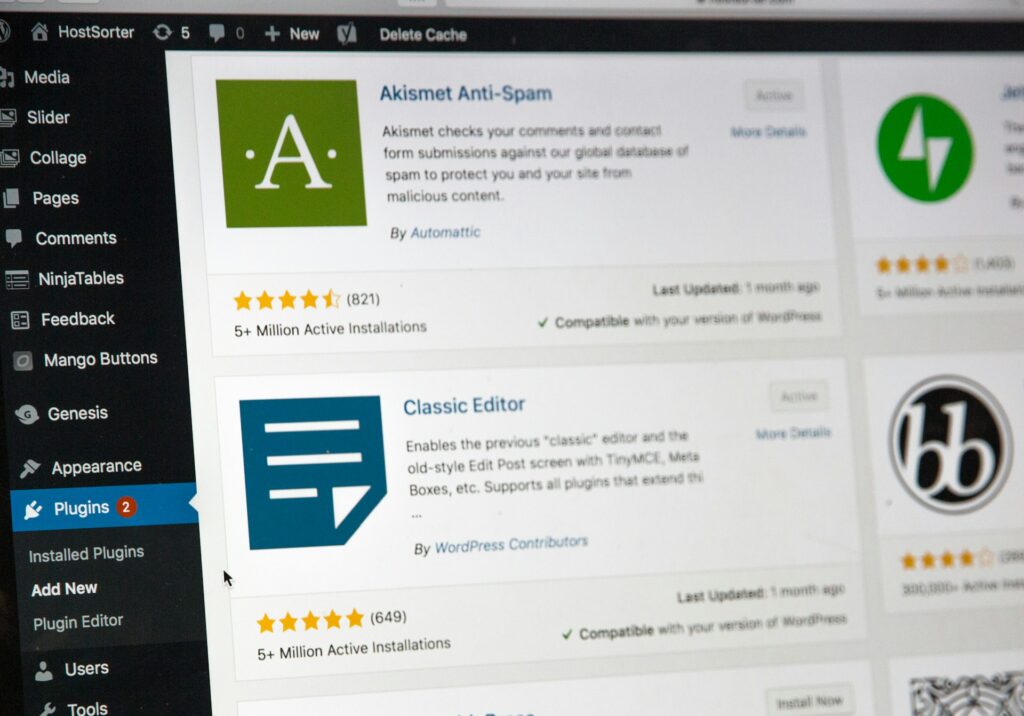Why Continuously Updating Your Website Plugins, WordPress Version, and Themes is Crucial?
Posted on May 3

In the rapidly changing world of the internet, keeping your website up to date is crucial. This is not only to stay at the forefront of technology but more importantly, to ensure security, enhance performance, and maintain compatibility with current web standards. This is particularly essential for websites using a content management system like WordPress, where regularly updating plugins, the WordPress core, and themes is vital. However, there are instances when blindly updating may not be the best choice.
Let’s delve deeper into why updates are so important and when it might be necessary to hit the “pause” button.
- Why Updates Are Crucial
- Security: The most critical reason is security. Most updates include security fixes that can protect your site from hacker attacks. Software that is not updated is a prime target for hackers. For instance, the WordPress core often releases security updates to patch vulnerabilities. Failing to update promptly could put your site at risk of being infected by malicious software.
- Performance Improvements: With technological advancements, new versions of plugins and themes usually offer performance improvements, making your site faster and more efficient. For example, a new version of a plugin might enhance database query efficiency, thereby speeding up page loading times.
- New Features: Updates often bring new features that can help your site stay modern and provide a better experience for your users. For instance, the introduction of the Gutenberg editor by WordPress offers users a more intuitive and creative content editing experience.
- Compatibility: As web standards evolve, updates ensure that your site remains compatible with the latest web technologies and browsers. For example, support for new web APIs or CSS features ensures that your site operates correctly on the latest browsers.
- Why Updates Might Not Always Be the Best Choice
Despite the importance of keeping up to date, there are situations where immediately updating could cause short-term instability or incompatibility:
- Customization Issues: If your site has a lot of customized functionalities or designs, suddenly updating plugins or themes might break these customizations, as new versions may not support certain custom codes. For example, if you have a highly customized WordPress theme and the theme update does not take your customizations into account, it could significantly alter the site’s appearance or functionality.
- Compatibility Testing: Before updating crucial plugins or themes, compatibility testing is needed to ensure that the new versions do not conflict with other components of your site. For instance, an update for a plugin might be incompatible with your current WordPress version, impairing site functionality.
- Major Updates: For significant updates, like major WordPress core version upgrades, it might be best to wait for community feedback and further patches to avoid being among the first to encounter problems. For example, transitioning from WordPress 4.x to 5.0, many plugins and themes were initially not fully compatible with the new Gutenberg editor, necessitating time to adapt.
- Best Practices
- Update in a Testing Environment: Before applying updates in the production environment, first conduct them in a testing environment to check for compatibility and functionality. This can help ensure that the new versions do not inadvertently break your site.
- Update One at a Time: Avoid updating all plugins and themes simultaneously. Update one, ensure everything works correctly, and then proceed to the next, especially for plugins critical to your site.
- Pay Attention to Update Logs: Before updating, read the update logs for plugins, themes, and the WordPress core. This can help you understand the contents of the updates, including any known issues or new features. This practice is especially important for deciding whether to update immediately or wait for a more stable version.
- Use a Child Theme: If you have customized your theme, using a child theme can ensure that your customizations are not lost during parent theme updates. This is an effective method to protect your site’s customizations from being overwritten.
- Monitor Community Feedback: For major updates, observing and evaluating community feedback can provide valuable insights to help you determine the best timing for updates. This is particularly applicable to large WordPress updates or widely used plugins and themes.
Adopting these best practices can not only help you maintain the stability and security of your site but also ensure that the site’s performance and user experience improve over time. Regularly checking and applying updates, while being cautious and orderly in the updating process, will help your site remain healthy in the long run.
Apply Now for Your Free One-on-One Consultation

Free Guide 🔎
What Every Business Owner Must Know About Hiring An Honest, Competent, Responsive And Fairly Priced I.T. Services Firm.
CrowdStrike Outage: Lessons Learned and Recommendations for Decision Makers Posted on July 24, 2024 Facebook …
The One Piece IT Checklist for Maintaining Business Websites Posted on July 17, 2024 Facebook …
Mid-Year IT Strategy Review: Ultimate Checklist for SME Leaders Posted on July 5, 2024 Facebook …
Navigating IT Security Risks in the Era of Remote Work Posted on June 28, 2024 …
Maximize Cyber Resiliency for your SME with One Simple Tool Posted on June 21, 2024 …
